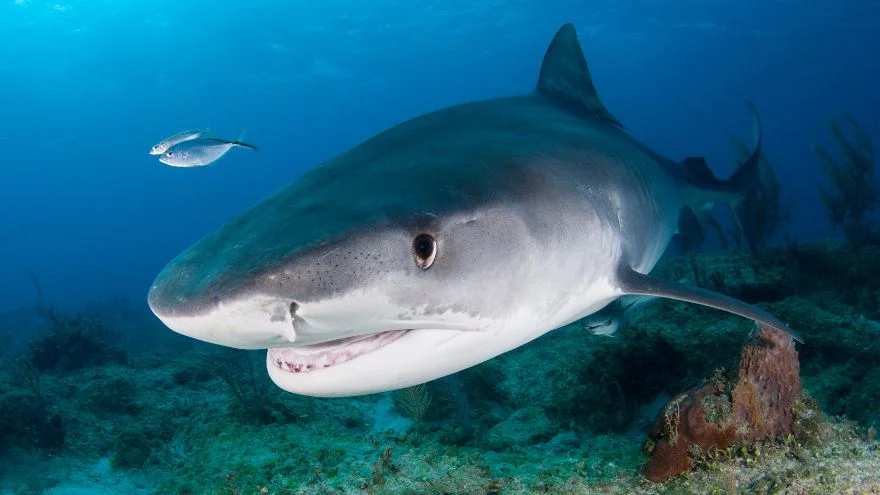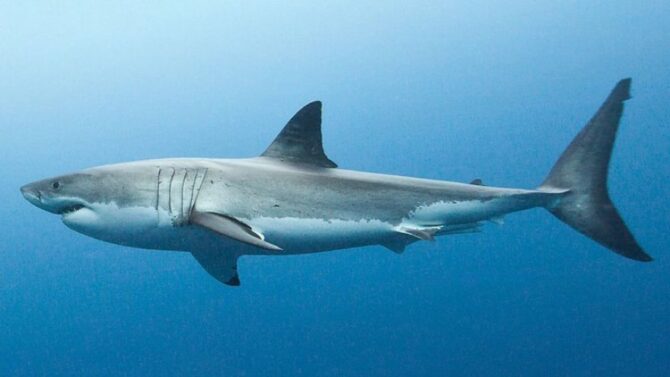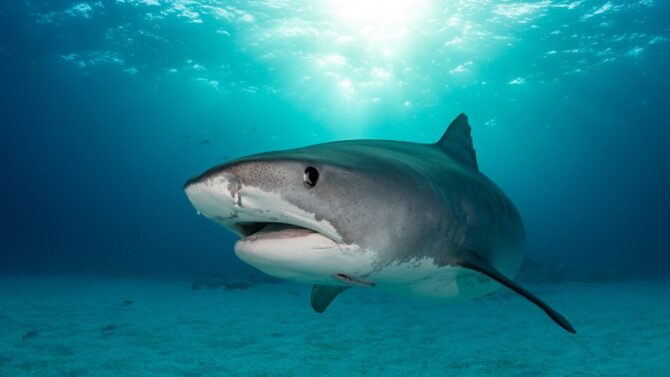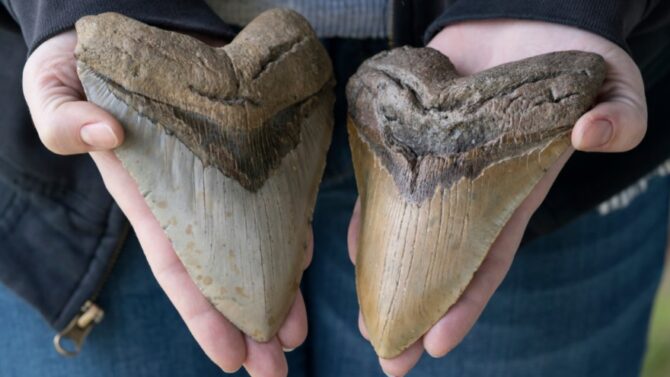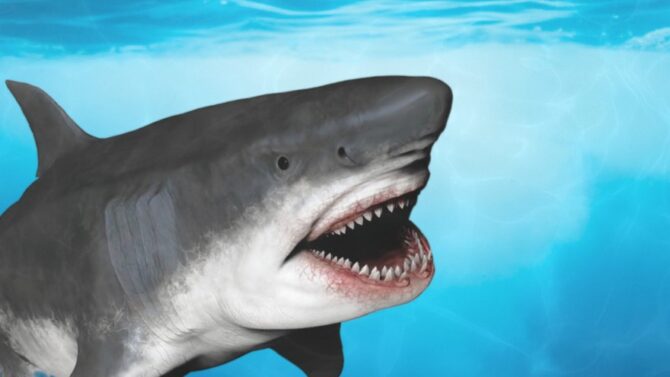Sharks are fearsome creatures that inhabit the ocean depths. Their razor-sharp teeth and menacing mouths characterize them.
The shark’s anatomy and how they see their world underwater is one that sparks our curiosity.
How do they use and protect their eyes? More so, do they have eyelids?
Yes, all sharks have eyelids, but they serve more as a defense than to keep the water out of their eyes and clean. Many species, including tiger sharks and hammerhead sharks, have a third eyelid called a nictitating membrane that allows them to blink their eyes.
Do Sharks Have Eyelids?

Like humans, sharks have eyelids, which assist shield their eyes from harm.
These enormous fish have two main eyelid structures: one aids in feeding and fighting, and the other is a third eyelid known as the nictitating membrane that protects the eyes.
Only sharks with the membrane can blink their eyes, however, not as frequently or in the same way as humans.
Do Sharks Blink Their Eyes?
Sharks blink and seal their nictitating membrane when attacking prey or engaging in combat with other predators.
While some sharks can blink, not all of them can. Eye blinking is only possible in sharks with nictitating membranes.
That membrane’s action of opening and closing resembles blinking.
However, they blink differently from people and other animals with functional eyelids.
How Do Sharks Blink?
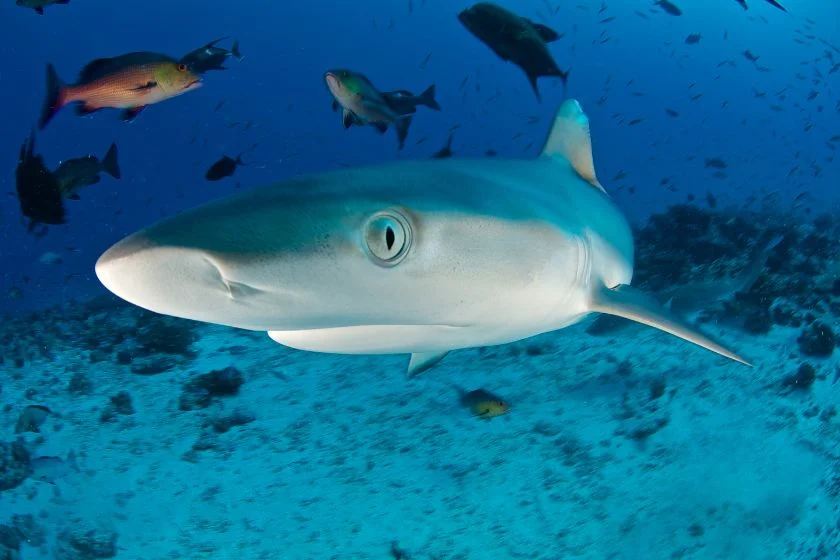
Sharks have keen vision and an excellent sense of smell. To defend themselves, they blink their eyes.
Sharks blink and seal their nictitating membrane when attacking prey or engaging in combat with other predators.
That membrane’s opening and closing motions resemble blinking.
However, sharks that do not blink have an eyeball that rolls back, exposing the white connective tissue.
When Do Sharks Blink?
When sharks are hunting or engaged in combat, they blink or, more precisely, cover their eyes with the nictitating membrane.
These enormous fish use this reflexive motion to shield their eyes from harm. Sharks also close their eyes out of curiosity as they approach something new.
It’s important to note that sharks don’t blink their eyelids as frequently as people do.
Instead, sharks blink or roll their eyeballs backward shortly before hunting or attacking, making them practically blind.
They, therefore, rely largely on other senses, such as aroma and electroreception.
How Often Do Sharks Blink?
Sharks blink differently than other animals, as has already been proven. The next step is to learn how frequently they blink.
Sharks rarely blink, and they can only do so when their third eyelid or nictitating membrane closes their eyes.
Therefore, even though this is a quick process, sharks continue to hunt or rest while their eyes are closed.
Experts have found that sharks cover their eyes with a special membrane when approaching a camera too closely.
Sharks lacking this ability, however, simply roll their eyes backward. They thus never blink.
Do Sharks Blink With Both Eyes?
Even though sharks have upper and lower eyelids, they are unable to move them like humans.
However, they have a distinct blinking pattern. Do they, therefore, possess the ability to blink both eyes?
Sharks are the only fish species that can blink with both eyes. They have a special membrane (nictitating membrane) that covers their eyes while eating or hunting.
This membrane shields both of their eyes as they fight their prey, giving the impression that they are blinking with both of them.
Shark Eyelids: What is the Function of a Nictitating Membrane?
The shark’s eyelids (nictitating membranes) assist the shark in protecting itself and keeping its eyes clear from any harm.
The nictitating membrane is the third eyelid, sometimes called a sliding eyelid, because it moves horizontally across the eye to shield it from potential harm or irritation and keep the eyes lubricated and clean while preserving vision and focus.
Other animal species, including camels, snakes, and birds, also have third eyelids.
How Do Sharks Without a Nictitating Membrane Protect Their Eyes?
Shark species like the Great whites, shortfin mako, thresher, sand tiger, dogfish, basking, etc., lack a nictitating membrane but still manage to protect their eyes.
These sharks possess an adaptation that allows them to totally roll their eyeballs backward and into their head.
A thick and strong membrane is drawn over the eye socket to protect the back of their eyes.
The process of turning its eyes completely to the back is called ocular rotation.
Do Sharks Only Rely On Their Vision For Hunting?
Sharks use a variety of other senses to locate their prey, such as sense of taste, smell, and hearing.
One study examined the shark’s sense of smell and how it compared to humans and dogs.
The results showed that sharks have a much better sense of smell than humans do (they can detect the scent of blood from a quarter mile away)— although less powerful than dogs’.
This may be due to humans losing parts of their noses through evolution.
However, sharks don’t seem to have this problem since they can still smell relatively well despite having small noses themselves.
Hearing is another sensory skill sharks possess that humans lack— again, due to evolution making this redundant in the natural world.
Even so, sharks excel at hearing underwater noises due to their large ears and complex ear structures unique to them among land vertebrates.
They can also detect electrical currents from other sea animals, which they utilize to track down their prey and attack them. This technique is known as electroreception.
Can Sharks Close Both Eyes?
Sight is crucial to a shark’s daily existence. They, therefore, take all necessary precautions to keep their eyes safe.
Sharks use various techniques to safeguard their priceless eyes, one of which is by closing or blinking both.
This is required to shield the eyes from any harm the prey may inflict.
However, only sharks with the nictitating membrane exhibit this trait; without this barrier, they simply roll their eyes backward as necessary.
Summary
Like many other animals, we’ve seen that sharks blink their eyes and have eyelids.
They also sense their environment with various organs augmented by heightened powers of sight, taste, and hearing.
Without these senses, a shark would be nearly impossible to hunt or avoid danger in the ocean depths.
Learn more about sharks:
